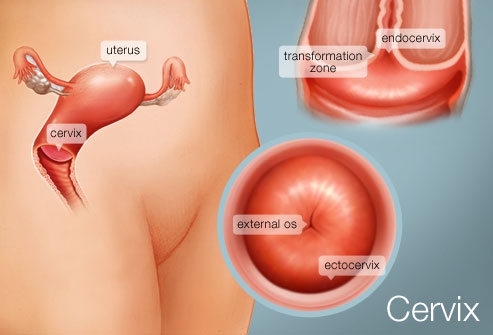A female body runs through a lot of changes during the monthly menstrual cycles at the time of ovulation or during the conception phase. Most of the time, the areas of the female genital tract, which are commonly affected, include cervix and vagina. The change in the position and texture of cervix are helpful in making important considerations. Research and clinical studies indicate that hormonal changes can lead to softening of cervix. This change in cervix is primarily circulatory changes caused by vascular reasons under the influence of hormonal fluctuations. Here we will discuss what does a soft cervix mean exactly?

What Does a Soft Cervix Mean?
Ovulation
During ovulation phase, the position of cervix changes as it rises slightly and becomes a bit softer, much like your lip. The cervix also dilates and becomes more hydrated in order to allow maximum entry of sperms and get ready for conception. As soon as the ovulation phase is over, the cervix comes to its original position and becomes narrow and firm again.
Early Pregnancy
Cervical changes are easily observable during early pregnancy. The cervix becomes soft just like a ripened fruit when compared to the normal cervix (before pregnancy) which feels like an unripe fruit. The changes in cervix can easily be observed by oneself. Initially it feels like the nose tip which is a bit hard and resistant to touch; however, by the end of first term, it becomes as soft and stretchable as lips. The change in cervical position is usually from posterior to anterior side, which makes it pointing towards your front.
It is to be noted that these changes are because the cervix is bloated with blood. Every female must keep a check on her cervical position at regular intervals. This can be done at home without requiring any medical/expert assistance if the female is able to feel the cervix. Or, you can turn to the physician to assess the position and texture of cervix.
Before Labor
Cervix softening happens at the time of labor. For a successful and uneventful natural birth, the cervix should be appropriately dilated so that the baby can pass through the cervical canal. Initially the cervix is hard with a rounded shape which is necessary to hold the baby and placental fluid. But near the labor, it becomes soft, as to allow a passageway to deliver the child. The layer of the cervix also becomes much thinner so that it becomes easy to dilate. Many women do not feel any pain during this softening process, while some experiences mild to severe pre-labor contractions usually a week before the actual process of labor begins.
If the contractions starts with the difference of 3 to 5 minutes and each contraction is lasting for about 40-50 seconds (and this process continuing for an hour), it is an indication that labor has started. Before actual labor, some pre-labor contractions may also appear which may be short or long in duration but will come at irregular intervals. Additionally, these contractions can be mild or associated with severe pain. All of these conditions either pre-labor or labor contractions help the cervix to be dilated to at least 4-5cm before the delivery, allowing the movement or propulsion of the baby's head near the pelvis. These contractions also help in thinning the layer of cervix to make it more soft and stretchable.
How to Check the Changes of Your Cervix
Experts suggest these tips
Wash your hands and make sure that no bacteria or other sources of infections are entering the reproductive tract. If there is already an infection present such as yeast or vaginal infection, then it is recommended to wait until the infection is cleared off completely.
Sit in a position which is most appropriate to check the cervix. It can be done by sitting on a toilet and placing one leg up over the bath tub corner or any position that you are most comfortable with.
Cervix is present at the very end of vaginal cavity. Vagina has a spongy nature which easily clears the way after applying small amount of pressure. It can be easily differentiated from the cervix on the basis of texture. For example, as opposed to the spongy nature of vagina, cervix is firm and soft which feels like as soft as lips at the end of the pregnancy.
Place the finger inside your vagina and move it in a straight direction without scratching the surrounding layer of skin, an upward and downward motion can be applied for clearing the way. Generally, the cervix is easy to find during non-ovulating days. It is, however, imperative to mention that locating the cervix may be a little challenging during ovulation.
The position of cervix must be checked at regular interval of time so that you can really learn how to check cervix and better understand its changes.

View All Comments /Add Comment